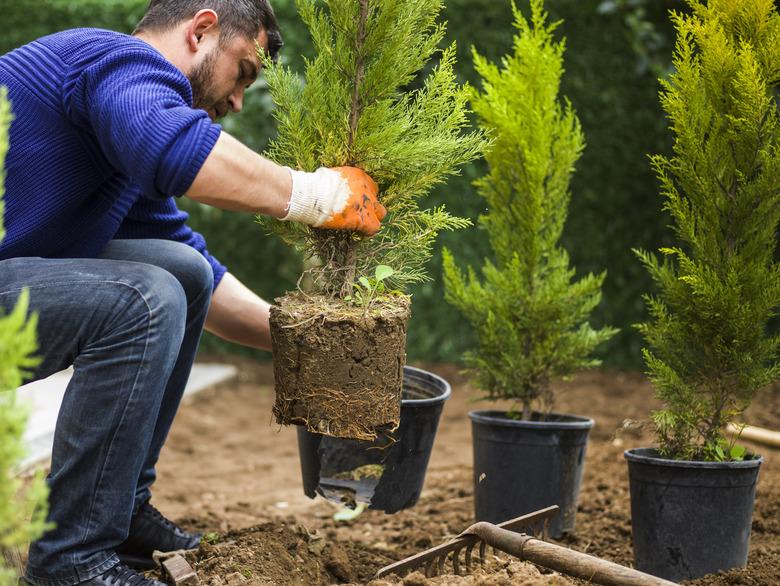The Disadvantages Of A Pine Tree
Knowing the disadvantages of a pine tree before you plant helps you decide if it's the best tree for your needs. Pine trees (Pinus spp.) are coniferous evergreens with clusters of long, slender needles. The trees grow between 30 and 100 feet tall in U.S. Department of Agriculture plant hardiness zones 2 through 10, depending on the species. While there are advantages to planting pine trees, such as year-round green, fragrant needles, the ability to grow in poor soils and minimal pruning, there are also some disadvantages.
Messy Needles and Cones
Pine trees, like other needled evergreens, drop needles, and the resulting mess is one of the disadvantages of a pine tree. Though they are evergreen, periodic needle shed occurs as new needles grow. Unlike the leaves of deciduous trees that can be raked up fairly easily and used for landscape mulch, pine needles are a little more difficult to remove.
The pine cones also drop from the pine tree. If the tree is planted near a lawn, the dropped cones can cause problems for mowers if they aren't removed. They can also hurt if you step on them with bare feet.
Pine Tree Disadvantages: Sap
Pine trees exude a sticky sap. The sap can get all over your hands if you try to collect the needles or cones that fall around the tree. Trying to wash off the sap reminds you of why its one of the disadvantages of a pine tree.
The sap also attracts insects. Some of these insects, such as butterflies, may be welcome. But other insects such as beetles and weevils are also attracted by the sap. They then cause damage to the tree when they bore into the wood. Pruning during the winter dormant period when the injury won't produce as much sap to draw pests helps to reduce insect problems.
Acidic Soil Requirements
While most pine trees will grow in poor soils with low levels of nutrients, they need an acidic soil pH below 7.0 to thrive. Alkaline soils can cause chlorosis, or yellowing of the needles, as well as poor growth rates and stunted growth. You can get a soil test kit to check the pH before you plant a pine tree.
The trees also need a soil with good drainage, and they can have problems in heavy clay soils. If your soil is not naturally acidic or doesn't drain well, this soil requirement is one of the disadvantages of a pine tree. Many pines species are also sensitive to air pollution and don't grow well in urban areas.
Tree Death From Pine Wilt
Pine trees have their own specific diseases that tree owners must guard against. Pine wilt is spread by a nematode carried by beetles. Soon after infection, the needles turn reddish-brown and the tree dies. There's nothing you can do to save the tree. Instead, you must remove it from the area and burn or dispose of it to prevent the disease from spreading.
Needle cast is another disease that affects pine trees. It's caused by different types of fungi. This disease causes the needles to change color and die. The tree sheds the needles prematurely, causing the tree to look sparse. Without a fungicide treatment, the entire pine tree may die.
